
TOOTH NUMBERING SYSTEM /
TOOTH IDENTIFICATION SYSTEMS
BY – K KISHOR KUMAR
24-1-2014
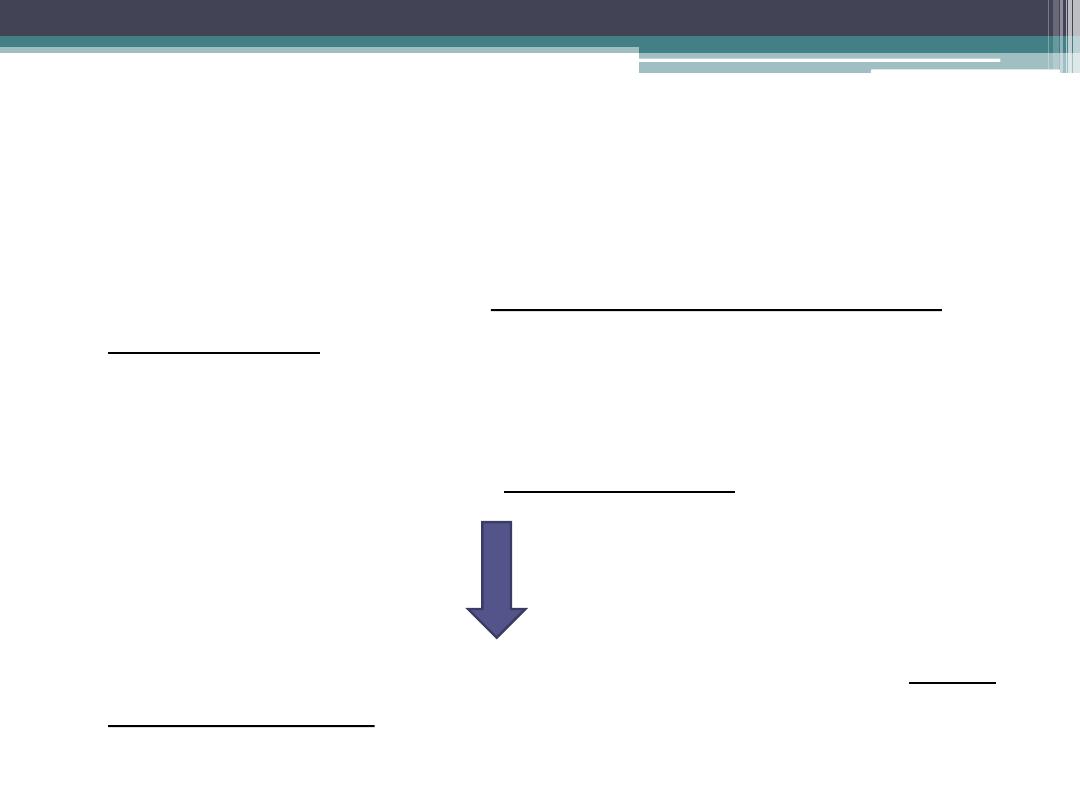
WHY DO WE NEED ?
•
system used by dentists to associate information to a
specific tooth.
•
In clinical practice some “shorthand” system of tooth
notation is necessary for recording data.
To do so efficiently, it is necessary to adopt a type of code
or numbering system for teeth

Types of numbering system’s.
•
There are several systems in world,
•
3 main systems are :
1.
Universal Notation System.
2.
Zsigmondy/Palmer Notation System.
3.
Federation Dentaire Internationale (FDI).
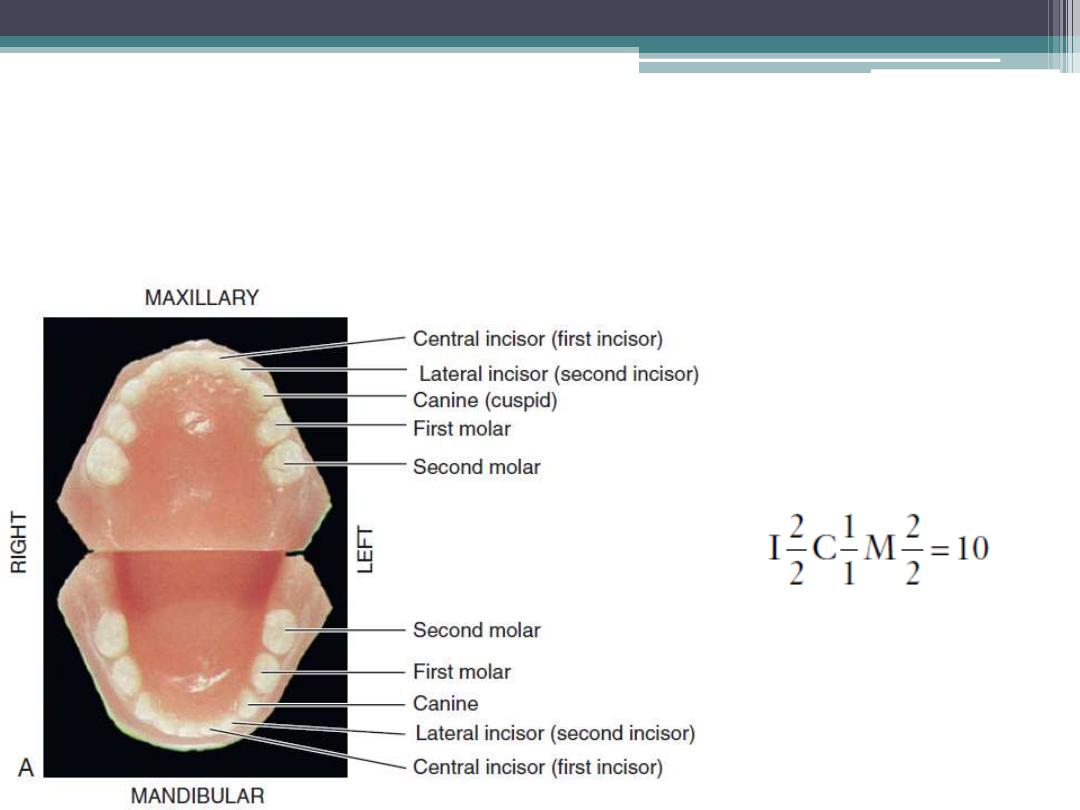
PRIMARY DENTITION
•
Dental formula for
the deciduous teeth
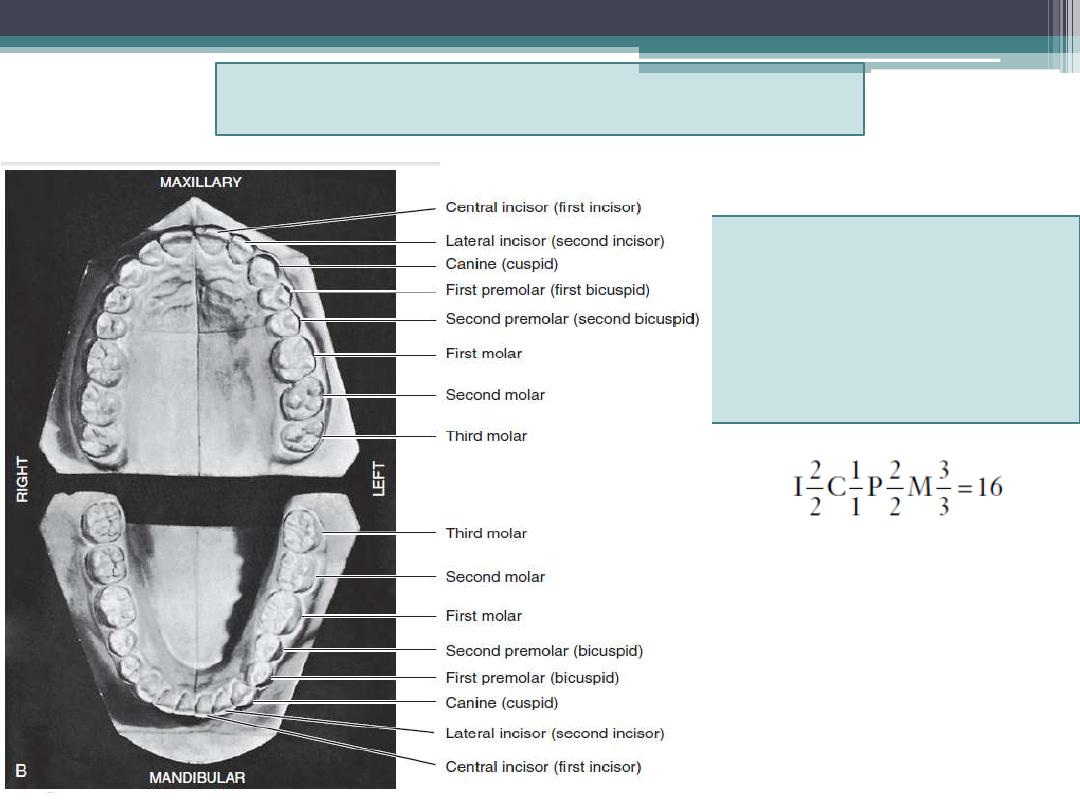
PERMANENT DENTITION
•
Dental formula for the
permanent human
dentition is as follows
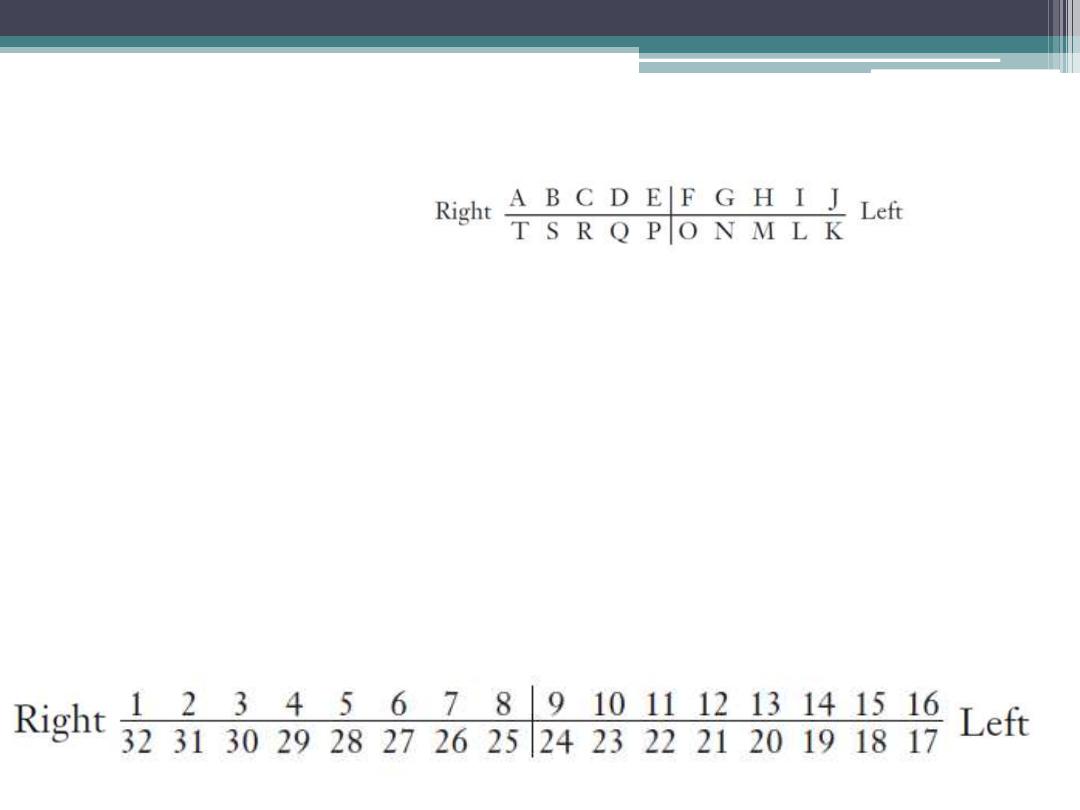
Universal Notation System
•
The universal system of notation for the primary dentition
uses ‘uppercase letters’ for each of the primary teeth.
•
For the maxillary teeth, beginning with the right second molar, letters A
through J, and for the mandibular teeth, letters K through T, beginning
with the left mandibular second molar.
•
The ADA in 1968 officially recommended the “universal” numbering
system.
2) For the permanent teeth ;
1)For the primary teeth ;
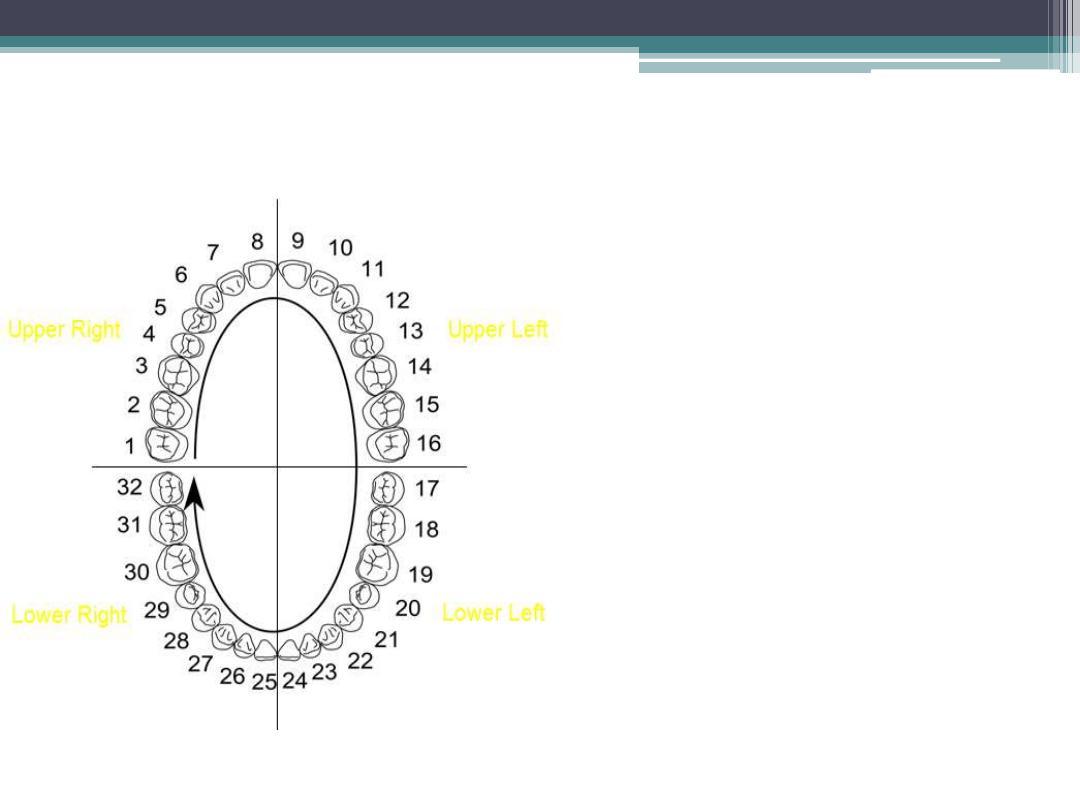
Universal Notation System
•
The universal system of notation
for the permanent dentition uses
‘numbers’ for each of the
permanent teeth.
•
The maxillary teeth are numbered
from 1 through 16, beginning with
the right third molar. Beginning
with the mandibular left third
molar, the teeth are numbered 17
through 32.
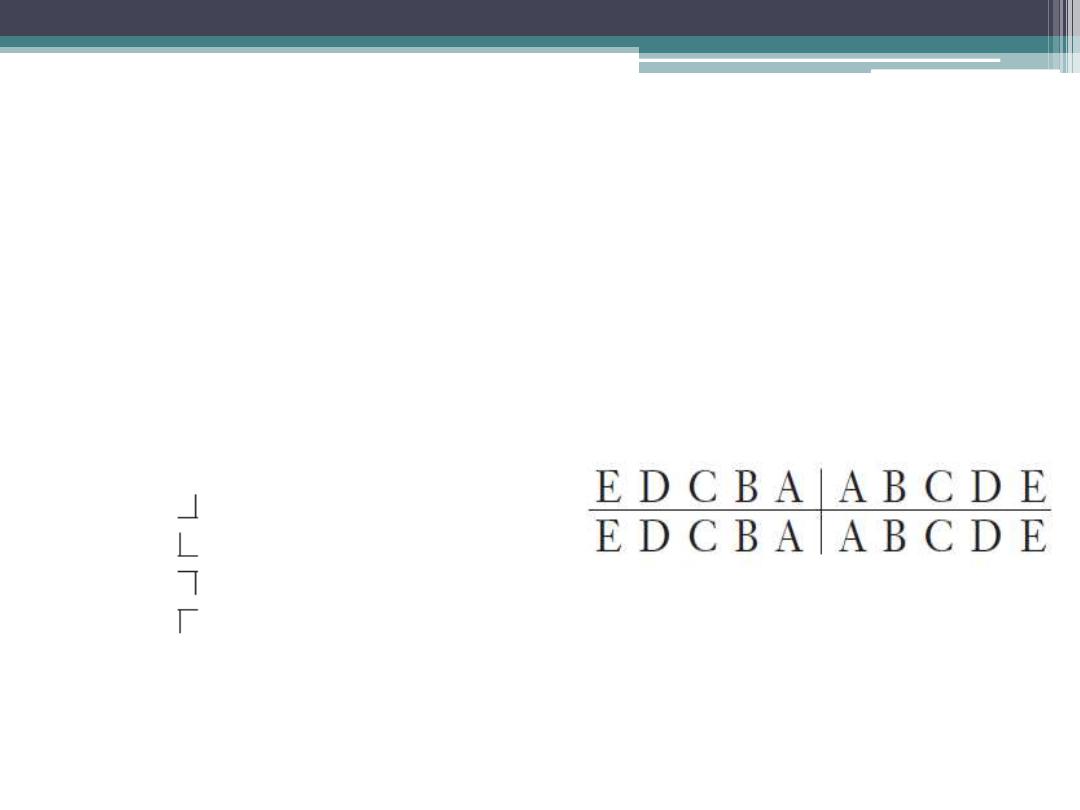
Zsigmondy/Palmer Notation System.
•
Symbolic system
•
In this system the arches are
divided into quadrants.
- upper right
- upper left
- lower right
- lower left
The Palmer notation for the entire
deciduous dentition is as follows:
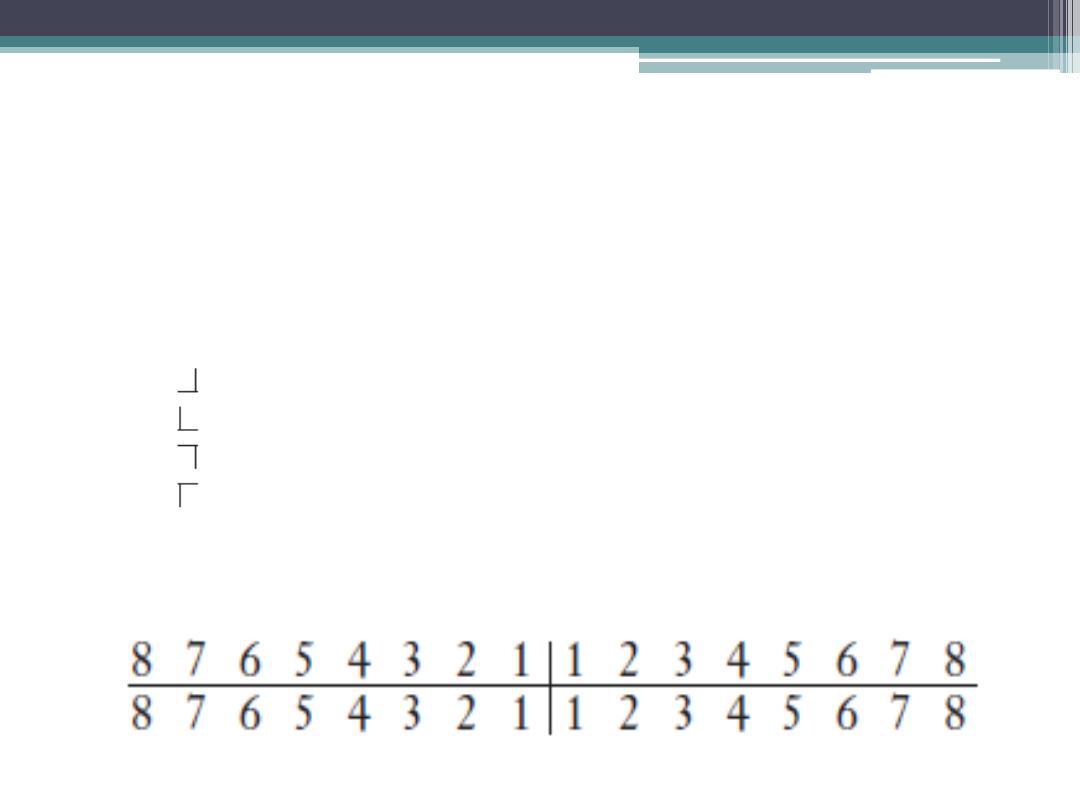
Zsigmondy/Palmer Notation System.
•
For the permanent dentition is a four-quadrant symbolic system.
•
Beginning with the central incisors, the teeth are numbered 1 through
8 (or more) in each arch.
- upper right
- upper left
- lower right
- lower left
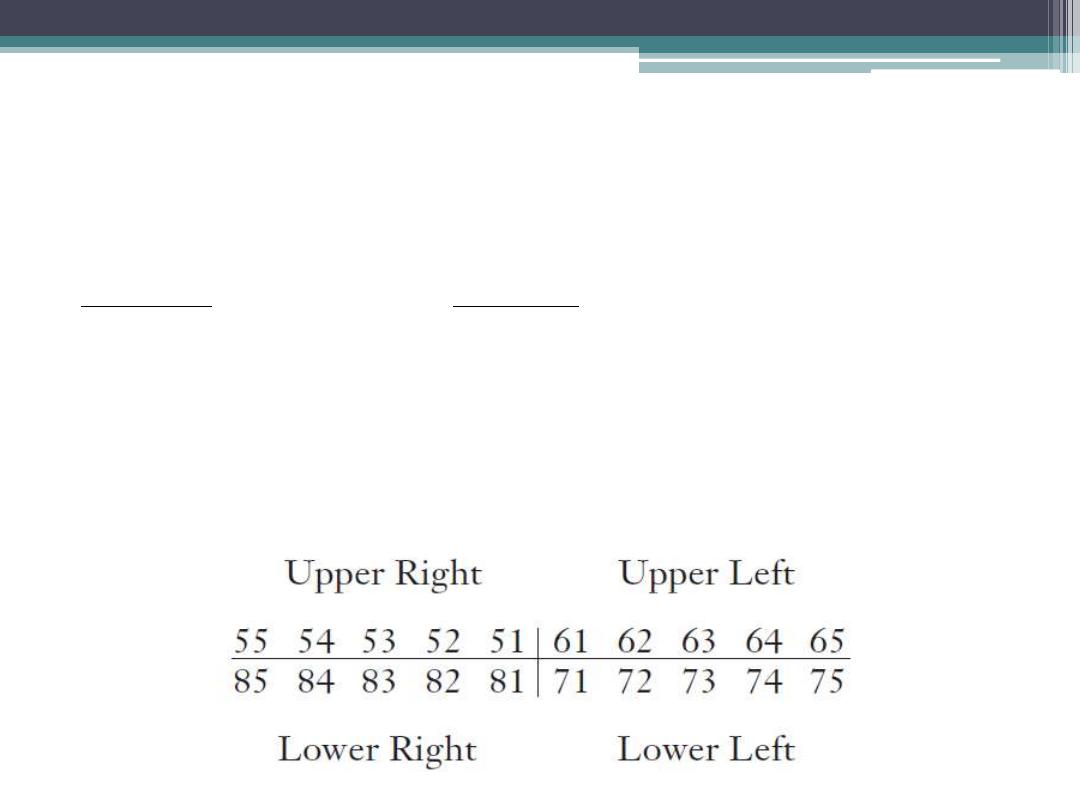
Federation Dentaire Internationale
(FDI).
•
Two-digit system.
•
Proposed by FDI has been Adopted by the WHO and by other
organizations such as the International Association for Dental
Research.
•
The first digit indicates the quadrant: 5 to 8 for the primary dentition.
•
The second digit indicates the tooth within a quadrant 1 to 5 for the
primary teeth.
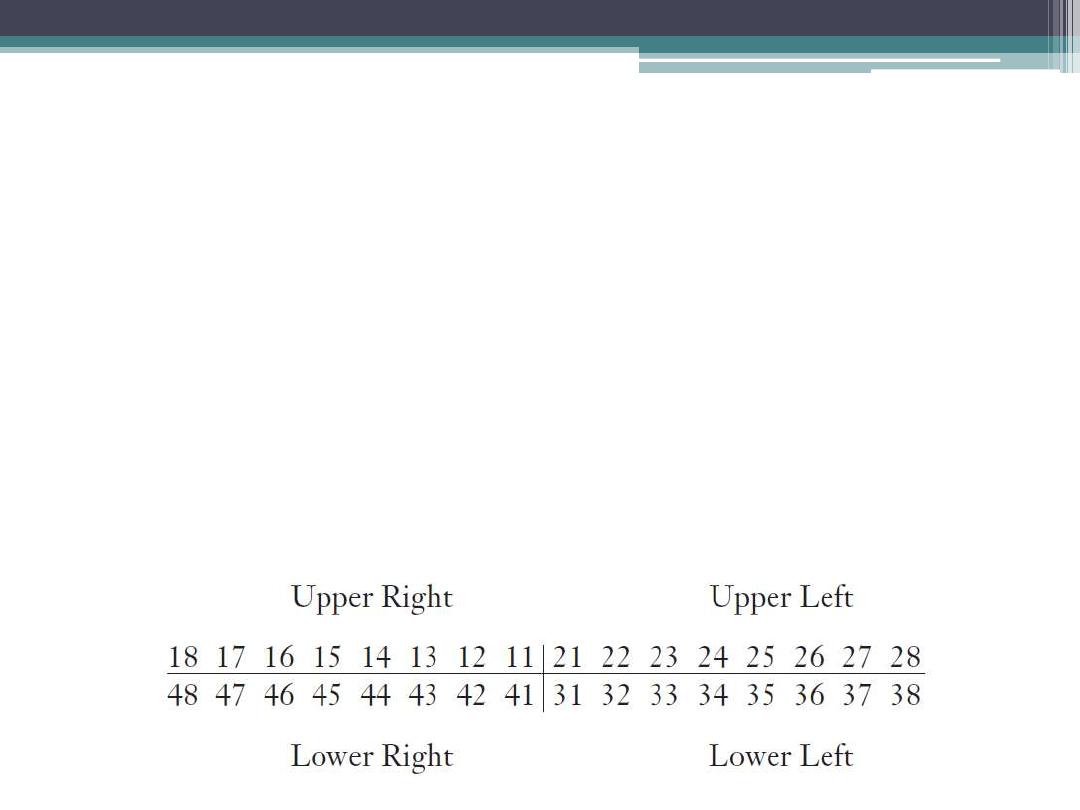
Federation Dentaire Internationale
(FDI).
•
The first digit indicates the quadrant: 1 to 4 for the
permanent dentition.
•
The second digit indicates the tooth within a quadrant:1
to 8 for the permanent teeth.
•
For example, the permanent upper right central incisor
is 11 (pronounced “one one,” not “eleven”).
